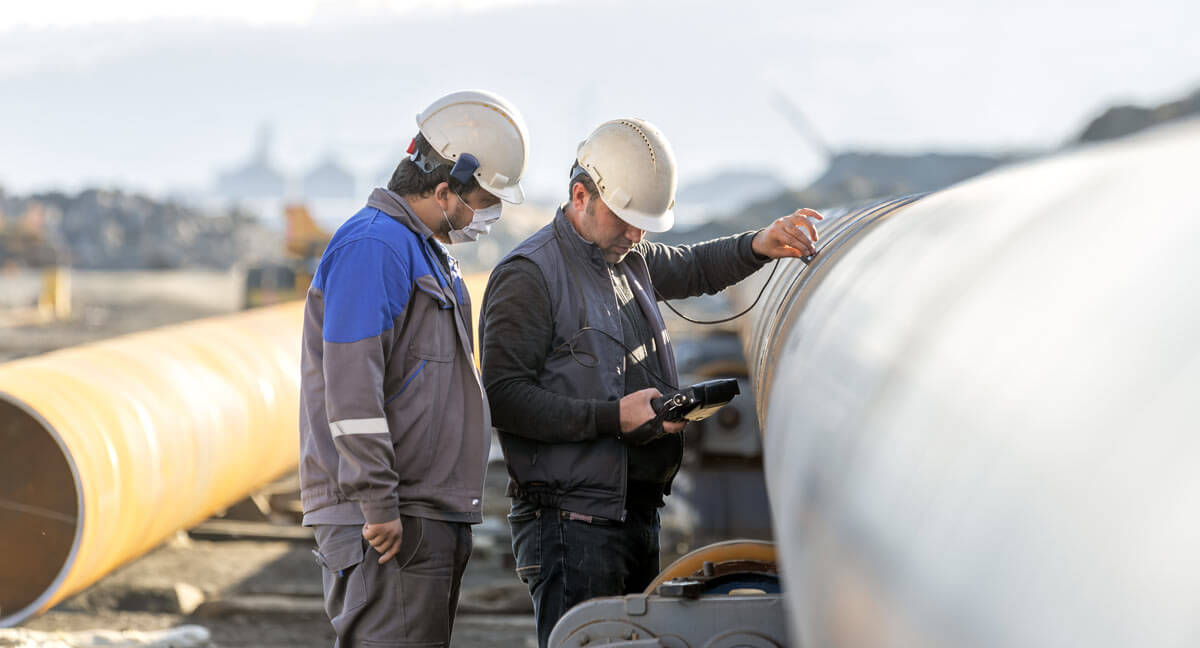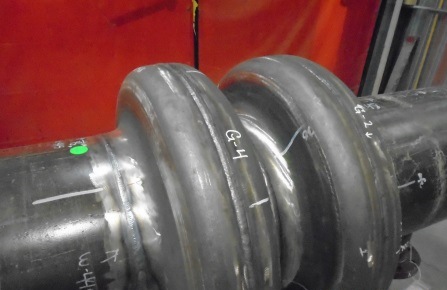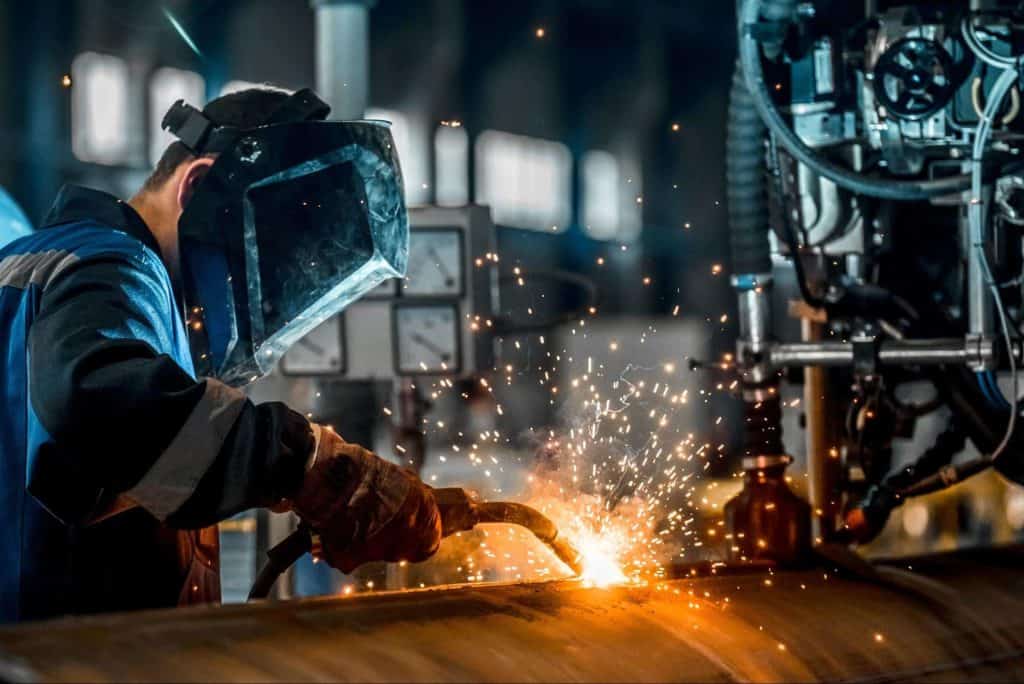Expert Welding Inspection Milwaukee Providers for Quality Control
Expert Welding Inspection Milwaukee Providers for Quality Control
Blog Article
A Thorough Checklist for Effective Welding Evaluation Practices
In the world of welding, the stability of frameworks is extremely important, necessitating an extensive technique to inspection practices. A detailed checklist acts as a vital tool in making sure adherence to sector criteria, encompassing vital pre-welding, in-process, and post-welding assessments. By systematically attending to material verification, weld quality, and complete documentation, companies can considerably improve safety and security and efficiency. What particular components should be focused on in each stage to attain optimal results? Exploring these important parts can produce understandings that exceptionally impact welding operations.
Recognizing Welding Requirements
Welding requirements play a critical function in ensuring the quality and security of welded frameworks and components. These requirements establish the requirements for products, procedures, screening, and evaluation, therefore giving a framework for consistent quality assurance in welding processes. Numerous companies, consisting of the American Welding Culture (AWS), the International Organization for Standardization (ISO), and the American Culture of Mechanical Engineers (ASME), have actually created extensive criteria that govern various facets of welding.
Comprehending welding requirements is crucial for professionals in the area, as adherence to these guidelines lessens the risk of issues and failings in welded joints. These standards cover particular requirements for weld top quality, consisting of appropriate tolerances, the kind of welding strategies to be used, and the qualifications needed for welders and examiners.

Pre-Welding Assessment Steps
Prior to any kind of welding process starts, a complete pre-welding evaluation is important to determine possible issues that might compromise the high quality of the weld. This first step offers as a crucial structure for making certain compliance with suitable welding codes and standards.
The initial action in the pre-welding evaluation is to verify the products being utilized. Next, it is essential to inspect the fit-up of the components to guarantee proper alignment and joint configuration.
Additionally, evaluating the cleanliness of the surfaces is crucial; contaminants such as oil, rust, or paint can negatively affect the top quality of the weld. Following this, a complete assessment of the welding equipment should be performed, ensuring that it is adjusted and in excellent functioning condition.
Last but not least, assessing the credentials of the welding personnel is vital. Welders must have the needed accreditations and experience to do the details welds required for the project. By adhering to these pre-welding inspection steps, the probability of flaws and failures in the last weld can be substantially lowered.

In-Process Assessment Methods
In-process inspection strategies play an essential function in guaranteeing the stability and top quality of welds as they are being carried out. These methods permit assessors to determine issues or inconsistencies from requirements in genuine time, thus protecting against pricey fixings and ensuring adherence to layout requirements.
One secret method involves visual evaluation, where assessors examine the weld bead for harmony, penetration, and correct profile. This can be complemented by the usage of evaluates to measure weld dimensions, making certain compliance with fixed tolerances. Furthermore, the implementation of non-destructive testing (NDT) methods, such as ultrasonic screening or magnetic particle testing, throughout the welding procedure can reveal subsurface imperfections that might not show up externally.
Another vital aspect is monitoring welding criteria, consisting of voltage, amperage, and travel speed. Uniformity in these parameters is vital for attaining ideal weld quality. Recording these criteria during the welding operation offers a traceable record for future recommendation.
Educating workers in correct assessment techniques and the use of ideal tools boosts the performance of in-process assessments. By integrating these techniques, companies can attain better welds, minimize rework, and eventually ensure the safety and dependability of welded frameworks.
Post-Welding Top Quality Checks
Following the conclusion of welding operations, post-welding quality checks are critical to verify that the welds fulfill all defined requirements and requirements. These checks are necessary for guaranteeing the honesty and longevity of the welded joints. The evaluation procedure Related Site normally starts with a visual assessment, assessing for surface flaws such as splits, porosity, or incomplete fusion.
Ultimately, non-destructive testing (NDT) techniques, such as ultrasonic testing, radiographic testing, or magnetic fragment testing, may be utilized to detect interior imperfections that are not visible to the nude eye. Each technique has its unique benefits and is chosen based upon the weld's place, product kind, imp source and the nature of the application.
Furthermore, validating dimensional precision is an essential aspect of post-welding quality checks. This involves gauging the weld's account, positioning, and size to make sure conformity with design specifications. Ultimately, evaluating the mechanical residential or commercial properties of the weld, including tensile strength and ductility, can give further guarantee of efficiency under operational problems. In general, complete post-welding inspections are essential for keeping adherence, efficiency, and safety and security to regulative and industry standards.
Documentation and Coverage
Just how can effective documents and reporting improve the welding evaluation procedure? Precise documents and detailed coverage are essential parts that ensure the stability and quality of welding procedures. Welding Inspection Milwaukee. They work as a formal record of inspection searchings for, facilitating responsibility and traceability in conformity with industry criteria
A well-structured reporting system allows assessors to plainly communicate any areas, non-conformances, or discrepancies needing improvement. This transparency promotes an atmosphere of constant improvement, as stakeholders can conveniently evaluate previous efficiency and apply corrective actions.
Additionally, efficient documents includes detailed documents such as welding treatment specifications (WPS), welder qualifications, and examination lists. These elements give a framework for reviewing weld quality and adherence to established standards. In case of disagreements or quality issues, thorough documents functions as a trusted reference, minimizing obscurity and protecting all celebrations involved.
Last but not least, maintaining arranged records aids in training and licensing workers, making sure that industry ideal practices are maintained. Inevitably, careful documents and reporting not only enhance the welding inspection procedure however additionally add to the total safety and dependability of bonded frameworks.

Final Thought
To conclude, a comprehensive checklist for effective welding evaluation methods is vital for making certain high quality helpful resources and security in bonded frameworks. Adherence to established welding standards, careful pre-welding inspections, extensive in-process examinations, and extensive post-welding high quality checks collectively add to the honesty of welded joints. Additionally, persistent documentation and coverage of evaluation searchings for improve accountability and facilitate constant enhancement. Carrying out these methods will substantially aid in compliance with sector requirements and inevitably foster a culture of high quality in welding operations.
Welding standards play a vital duty in making sure the high quality and safety of welded components and frameworks. Various organizations, including the American Welding Culture (AWS), the International Organization for Standardization (ISO), and the American Society of Mechanical Engineers (ASME), have actually established extensive requirements that govern various facets of welding.
Following the conclusion of welding operations, post-welding quality checks are essential to confirm that the welds fulfill all defined requirements and requirements - Welding Inspection Milwaukee.In verdict, a detailed checklist for reliable welding evaluation techniques is essential for making sure high quality and safety and security in welded frameworks. Adherence to established welding requirements, precise pre-welding examinations, rigorous in-process assessments, and thorough post-welding high quality checks collectively add to the honesty of bonded joints
Report this page